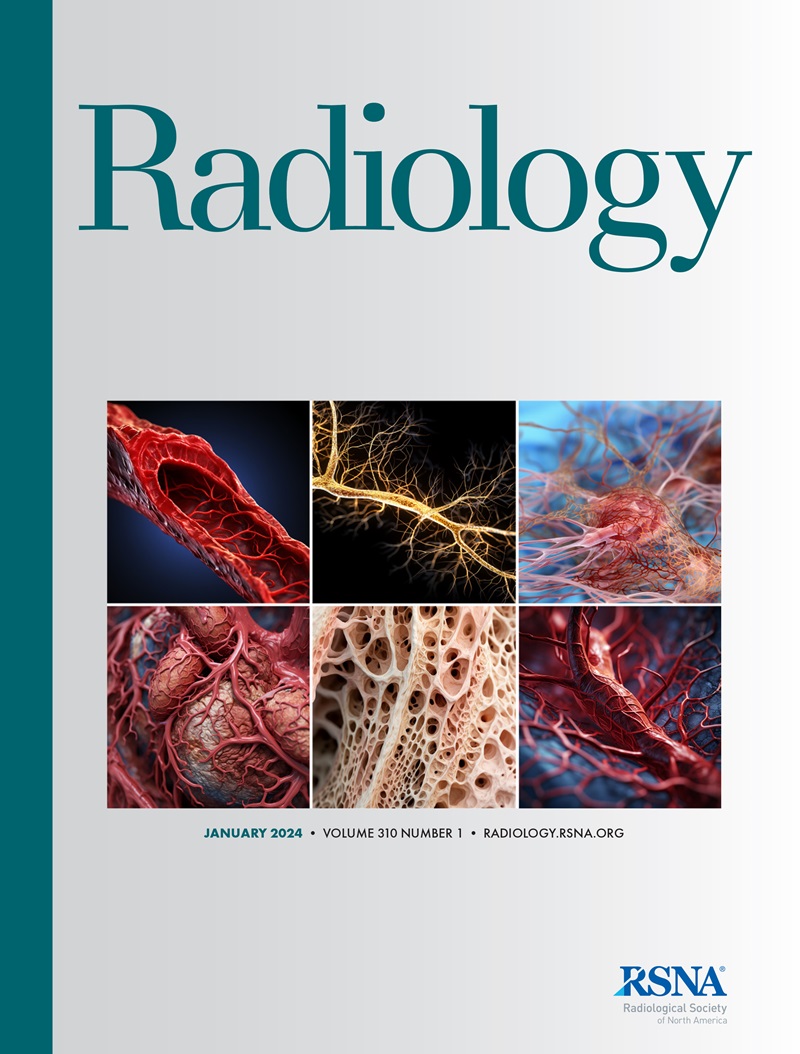求助PDF
{"title":"CT结肠镜检查与多靶点粪便DNA检测用于结直肠癌筛查:成本-效果分析。","authors":"Perry J Pickhardt, Loredana Correale, Cesare Hassan","doi":"10.1148/radiol.243775","DOIUrl":null,"url":null,"abstract":"<p><p>Background Colorectal cancer (CRC) is largely preventable or curable with effective screening. Purpose To compare both the clinical efficacy and cost effectiveness of CRC screening with CT colonography (CTC) with those of multitarget stool DNA (mt-sDNA) testing. Materials and Methods A state-transition Markov model was constructed using updated natural history evidence for colorectal polyps applied to a hypothetical 10 000-person cohort representative of the 45-year-old U.S. population. Three screening strategies were modeled with these data: mt-sDNA testing every 3 years, the conventional CTC (CTC<sub>conv</sub>) strategy of immediate polypectomy for all polyps measuring at least 6 mm every 5 years, and the surveillance CTC (CTC<sub>surv</sub>) strategy of 3-year CTC follow-up for small polyps (6-9 mm) and polypectomy for large polyps (≥10 mm). Multifaceted model validation was performed to confirm robustness. A detailed sensitivity analysis was performed in addition to the base-case scenario. Results Without screening, the cumulative incidence of CRC was 7.5% (<i>n</i> = 752), which was reduced by 59% (<i>n</i> = 310) with mt-sDNA, 75% (<i>n</i> = 190) with CTC<sub>conv</sub>, and 70% (<i>n</i> = 223) with CTC<sub>surv</sub> screening. The estimated programmatic costs per person for no screening, mt-sDNA, CTC<sub>conv</sub>, and CTC<sub>surv</sub> were $4955, $6011, $4422, and $3913, respectively. The estimated cost per quality-adjusted life year (QALY) gained for mt-sDNA testing was $8878, whereas both CTC strategies resulted in cost savings. Accordingly, CTC strategies dominated over both mt-sDNA and no screening (ie, more clinically efficacious and more cost-effective [cost-saving]). However, the CTC<sub>conv</sub> strategy was not as cost-effective as the CTC<sub>surv</sub> strategy, as costs related to more optical colonoscopies did not offset the corresponding small gains in QALYs. The results were similar when CRC screening began at 50 and 65 years of age. Conclusion Both CTC screening strategies dominated over mt-sDNA screening and no screening, yielding cost savings and increased clinical efficacy. The CTC strategy consisting of 3-year surveillance for small colorectal polyps and colonoscopy referral for large polyps achieved the best overall balance of cost and clinical efficacy. © RSNA, 2025 <i>Supplemental material is available for this article.</i> See also the editorial by Galgano and Smith in this issue.</p>","PeriodicalId":20896,"journal":{"name":"Radiology","volume":"315 3","pages":"e243775"},"PeriodicalIF":12.1000,"publicationDate":"2025-06-01","publicationTypes":"Journal Article","fieldsOfStudy":null,"isOpenAccess":false,"openAccessPdf":"","citationCount":"0","resultStr":"{\"title\":\"CT Colonography versus Multitarget Stool DNA Test for Colorectal Cancer Screening: A Cost-Effectiveness Analysis.\",\"authors\":\"Perry J Pickhardt, Loredana Correale, Cesare Hassan\",\"doi\":\"10.1148/radiol.243775\",\"DOIUrl\":null,\"url\":null,\"abstract\":\"<p><p>Background Colorectal cancer (CRC) is largely preventable or curable with effective screening. Purpose To compare both the clinical efficacy and cost effectiveness of CRC screening with CT colonography (CTC) with those of multitarget stool DNA (mt-sDNA) testing. Materials and Methods A state-transition Markov model was constructed using updated natural history evidence for colorectal polyps applied to a hypothetical 10 000-person cohort representative of the 45-year-old U.S. population. Three screening strategies were modeled with these data: mt-sDNA testing every 3 years, the conventional CTC (CTC<sub>conv</sub>) strategy of immediate polypectomy for all polyps measuring at least 6 mm every 5 years, and the surveillance CTC (CTC<sub>surv</sub>) strategy of 3-year CTC follow-up for small polyps (6-9 mm) and polypectomy for large polyps (≥10 mm). Multifaceted model validation was performed to confirm robustness. A detailed sensitivity analysis was performed in addition to the base-case scenario. Results Without screening, the cumulative incidence of CRC was 7.5% (<i>n</i> = 752), which was reduced by 59% (<i>n</i> = 310) with mt-sDNA, 75% (<i>n</i> = 190) with CTC<sub>conv</sub>, and 70% (<i>n</i> = 223) with CTC<sub>surv</sub> screening. The estimated programmatic costs per person for no screening, mt-sDNA, CTC<sub>conv</sub>, and CTC<sub>surv</sub> were $4955, $6011, $4422, and $3913, respectively. The estimated cost per quality-adjusted life year (QALY) gained for mt-sDNA testing was $8878, whereas both CTC strategies resulted in cost savings. Accordingly, CTC strategies dominated over both mt-sDNA and no screening (ie, more clinically efficacious and more cost-effective [cost-saving]). However, the CTC<sub>conv</sub> strategy was not as cost-effective as the CTC<sub>surv</sub> strategy, as costs related to more optical colonoscopies did not offset the corresponding small gains in QALYs. The results were similar when CRC screening began at 50 and 65 years of age. Conclusion Both CTC screening strategies dominated over mt-sDNA screening and no screening, yielding cost savings and increased clinical efficacy. The CTC strategy consisting of 3-year surveillance for small colorectal polyps and colonoscopy referral for large polyps achieved the best overall balance of cost and clinical efficacy. © RSNA, 2025 <i>Supplemental material is available for this article.</i> See also the editorial by Galgano and Smith in this issue.</p>\",\"PeriodicalId\":20896,\"journal\":{\"name\":\"Radiology\",\"volume\":\"315 3\",\"pages\":\"e243775\"},\"PeriodicalIF\":12.1000,\"publicationDate\":\"2025-06-01\",\"publicationTypes\":\"Journal Article\",\"fieldsOfStudy\":null,\"isOpenAccess\":false,\"openAccessPdf\":\"\",\"citationCount\":\"0\",\"resultStr\":null,\"platform\":\"Semanticscholar\",\"paperid\":null,\"PeriodicalName\":\"Radiology\",\"FirstCategoryId\":\"3\",\"ListUrlMain\":\"https://doi.org/10.1148/radiol.243775\",\"RegionNum\":1,\"RegionCategory\":\"医学\",\"ArticlePicture\":[],\"TitleCN\":null,\"AbstractTextCN\":null,\"PMCID\":null,\"EPubDate\":\"\",\"PubModel\":\"\",\"JCR\":\"Q1\",\"JCRName\":\"RADIOLOGY, NUCLEAR MEDICINE & MEDICAL IMAGING\",\"Score\":null,\"Total\":0}","platform":"Semanticscholar","paperid":null,"PeriodicalName":"Radiology","FirstCategoryId":"3","ListUrlMain":"https://doi.org/10.1148/radiol.243775","RegionNum":1,"RegionCategory":"医学","ArticlePicture":[],"TitleCN":null,"AbstractTextCN":null,"PMCID":null,"EPubDate":"","PubModel":"","JCR":"Q1","JCRName":"RADIOLOGY, NUCLEAR MEDICINE & MEDICAL IMAGING","Score":null,"Total":0}
引用次数: 0
引用
批量引用

 求助内容:
求助内容: 应助结果提醒方式:
应助结果提醒方式:


